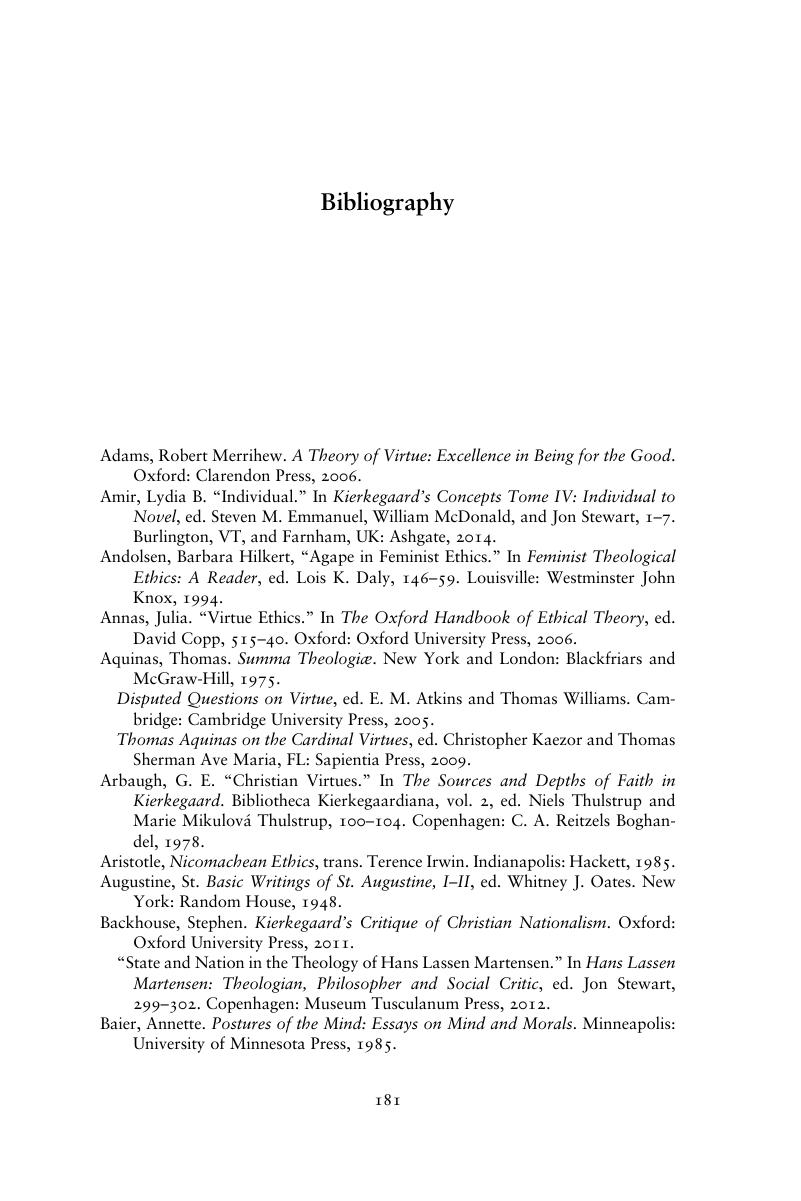Book contents
- Kierkegaard and Religion
- Cambridge Studies in Religion, Philosophy, and Society
- Kierkegaard and Religion
- Copyright page
- Contents
- Acknowledgments
- Abbreviations
- Prologue
- 1 The Constituents of Personality
- 2 Portraits of Character
- 3 Character and Virtue
- 4 Existence as a Time of Testing
- 5 The Content and Formation of Christian Character
- 6 Progress and Sanctification in the Christian Life
- Epilogue
- Bibliography
- Notes
- Index
- References
Bibliography
Published online by Cambridge University Press: 11 April 2018
- Kierkegaard and Religion
- Cambridge Studies in Religion, Philosophy, and Society
- Kierkegaard and Religion
- Copyright page
- Contents
- Acknowledgments
- Abbreviations
- Prologue
- 1 The Constituents of Personality
- 2 Portraits of Character
- 3 Character and Virtue
- 4 Existence as a Time of Testing
- 5 The Content and Formation of Christian Character
- 6 Progress and Sanctification in the Christian Life
- Epilogue
- Bibliography
- Notes
- Index
- References
Summary

- Type
- Chapter
- Information
- Kierkegaard and ReligionPersonality, Character, and Virtue, pp. 181 - 194Publisher: Cambridge University PressPrint publication year: 2018

